by: primoz December 28th, 2010 comments:
The second week of data collection and trainings in mapping and video editing techniques is behind us. We decided we’ll hold map editing separately from video editing because of the overwhelmingly large numbers of people who showed interest in being trained.
The data editing in OSM session was held on Tuesday, 14.12.2010. Turnout was good as always, although some people from one or two villages did not turn up (I guess they’ll do the work on some other occasion). We only edited points as it would take too much time if we tried to edit the tracks as well. The tracks will be edited separately.
Observations:
- People had different skills as usual
- Drawing tracks is a bigger challenge than editing points
- We have to separate people into smaller groups, so we’ll have to rethink our strategy (trainings will have to happen on different days, in morning and afternoon hours, all three programs separately – this is because we need to create smaller teams so the trainings are more efficient)
All was good in the end, some of Mathare got mapped and hopefully some people got excited.
Video and voice trainings were on Wednesday, 15.12.2010. Around 15 people showed up for video in the morning session. No one came for the afternoon session (probably because everybody came in the morning). Kibera News Network guys did a good training and managed to produce two short video reports about A Bicycle Repair Man and Mathare Sewage.
Nobody showed up for voice (probably because people weren’t directly called and most of them have been to the mapping and video trainings). So Sande (second from top to bottom) from Voice of Kibera and I talked about merging mapping and voice trainings. First the trainees would receive training in GPS data collection and editing and after every session they would receive Voice training as well – since it’s a kind of mapping anyway, that way we’ll recruit more members to Voice.
The first two weeks were sort of a sample of what we’re offering. The real trainings and work will start in the year of 2011. We’ll have to figure out how to deal with large numbers. I sense they might shrink with time, but we’ll see.
For you to enjoy, here’s the move edited by Joe from Kibera News Network and Jeff Mohammed from Mathare about Kibera teams training Mathare: Map Kibera presents Map Mathare.
See you in the New Year. Exciting things are coming up!
Or as Jeff would say: Everything is cool, buda!
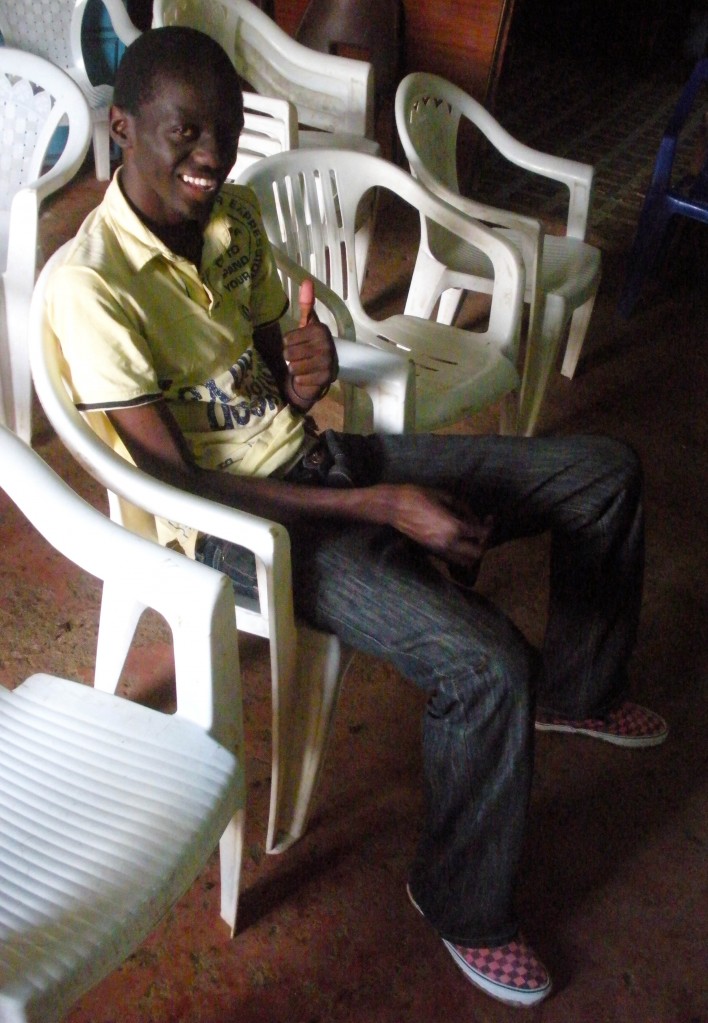
Jeff Mohammed
by: primoz December 13th, 2010 comments:
We started the long awaited Map Mathare on Monday, 6th December, 2010.
Before that we had a forum on Wednesday, 1st December, where teams from Kibera presented what they did and talked about the plans for Map Mathare. The forum was a success as around 130 people showed up and the response we got made us believe it’s possible.
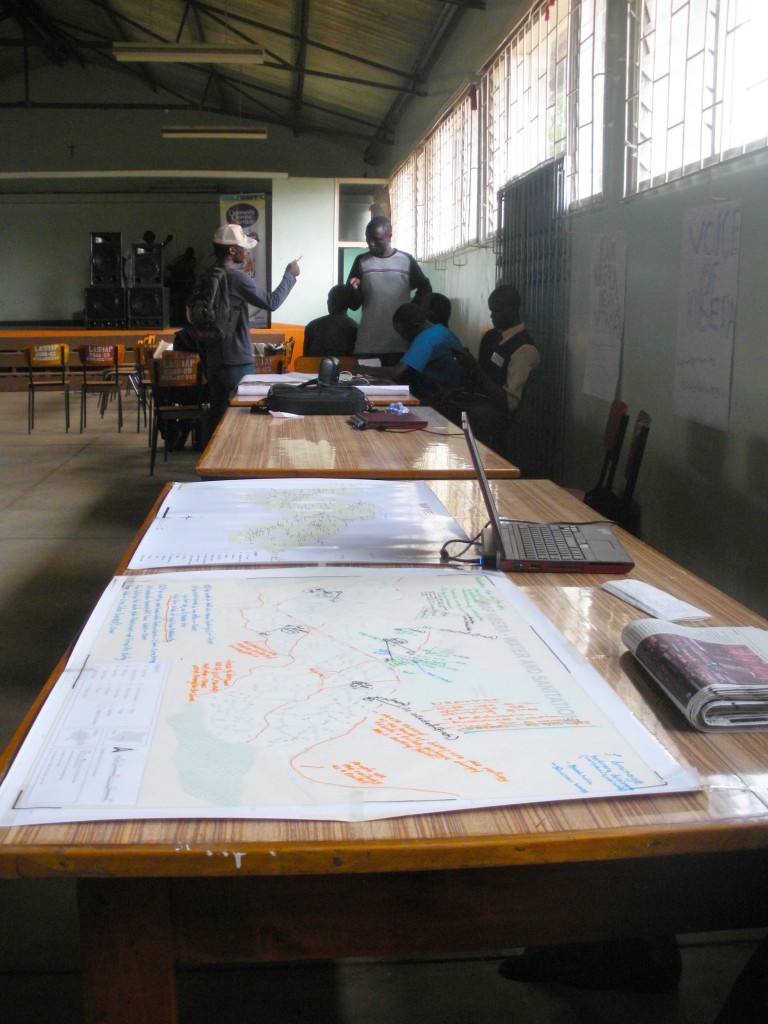
Stands for each of the programs
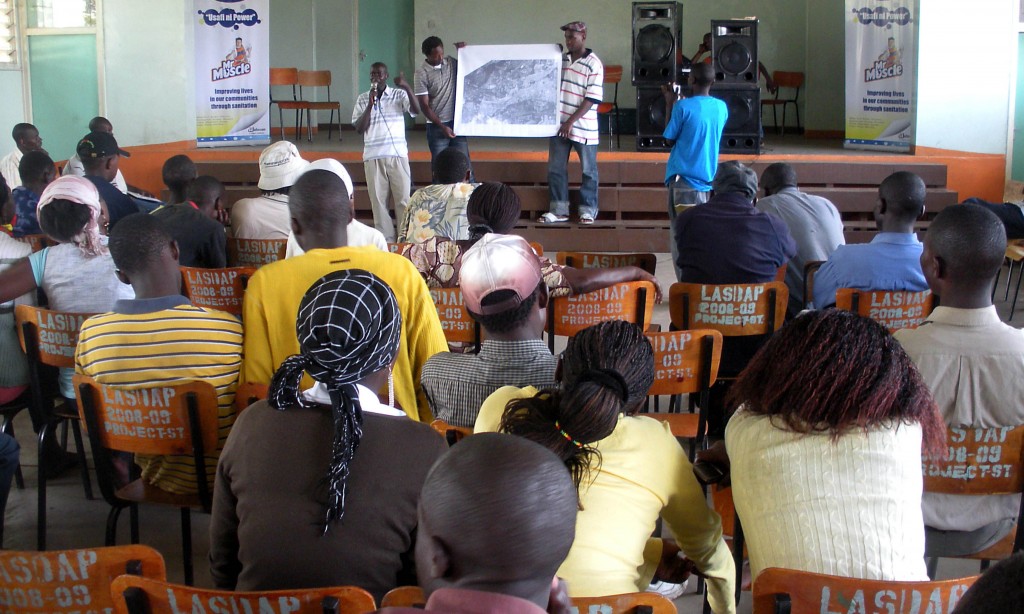
Simon Kokoyo explaining the importance of Map Mathare
Sailing on the success of the forum we stepped into Mathare as said on the 6th. Each team presented, this time about more theoretical approaches to each of the three programs. Even though only 5 people showed on time we ended up (thanks to Simon Kokoyo) with 46 participants on the first day. I had a hunch we might see some of their friends the next day.
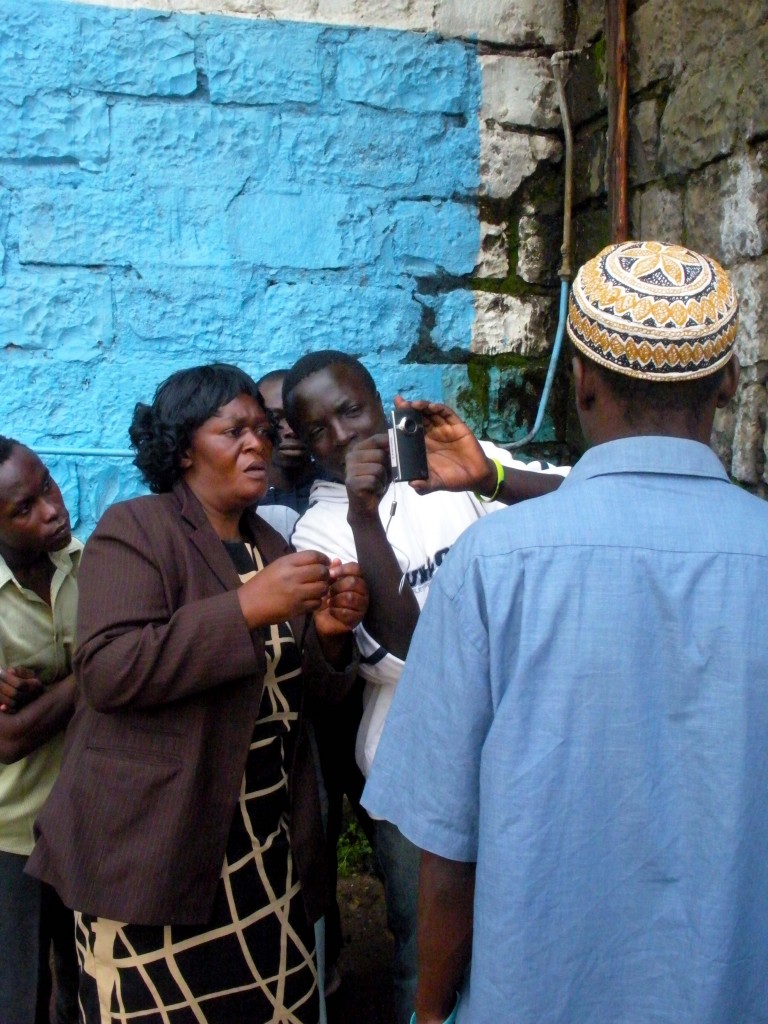
Steve from Kibera News Network in action
And I was right as around 70 people showed up on Tuesday, 7th December, for the practical part – GPS and video data collection. The most surprising of all? Everybody was on time! We had 15 people from Kibera and two helpers from Mukuru slum to handle the swarming population of would-be mappers and reporters. We divided people into teams representing different villages of Mathare and sent them out on a data collection spree. The day went smoothly except for one incident where a team from Mathare Village 1 was attacked by a drunken man but the team members from Village 1 managed to control the man.
Wednesday, 8th of December, was reserved for data editing but an unfortunate thing happened – a blackout. So instead of having almost 100 people waiting around for the generator to be set up we sent everybody out to the field again to collect more data.
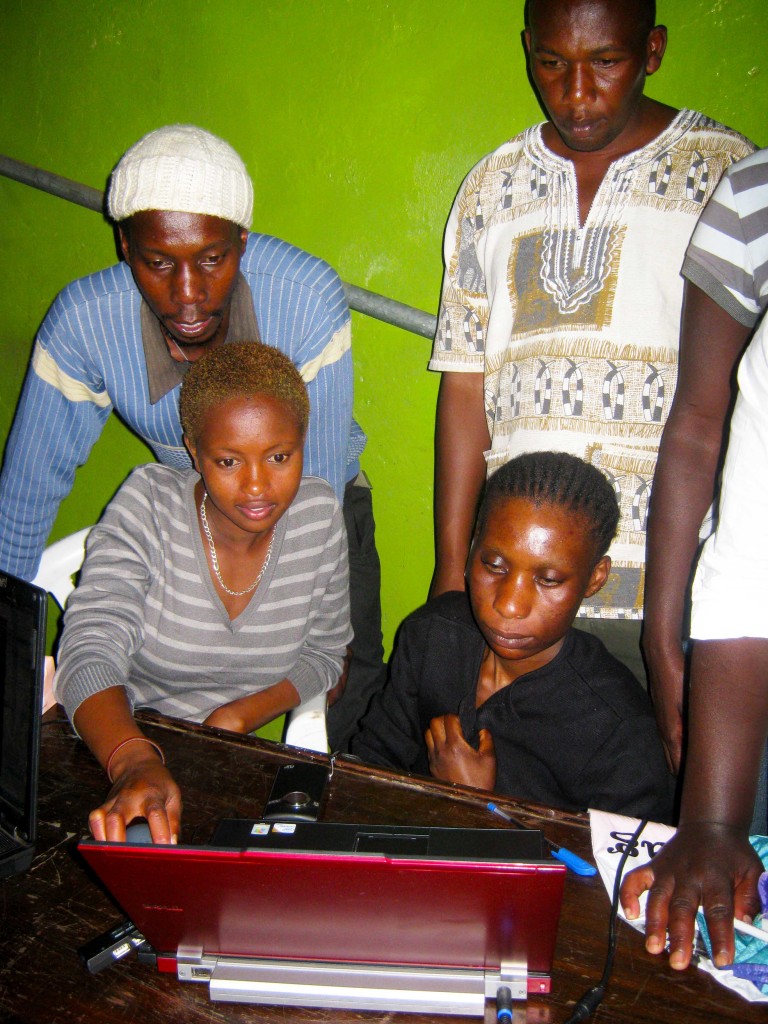
Joe from Kibera News Network (white cap) in action
GPS data collected the first week:
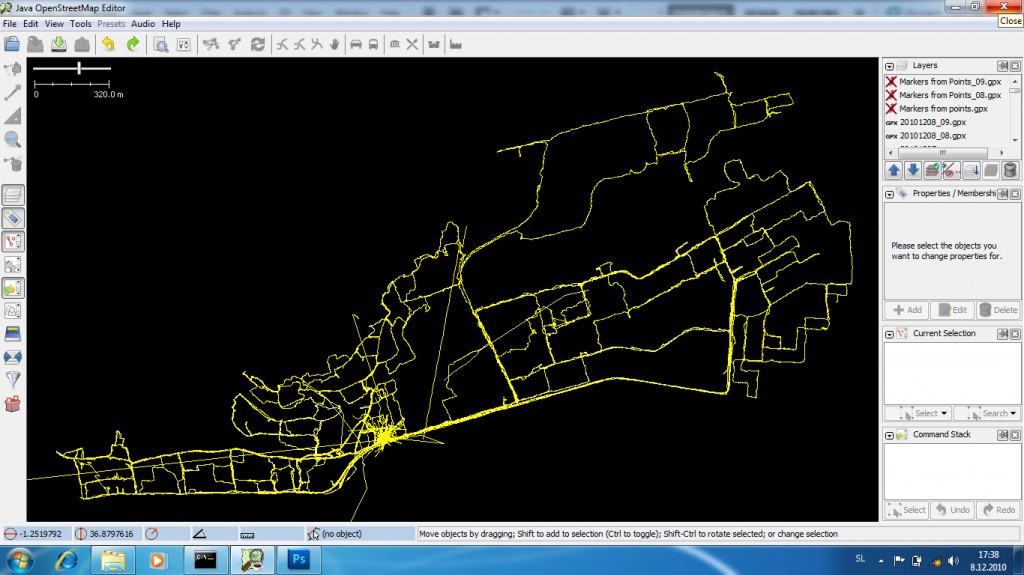
Mathare tracks
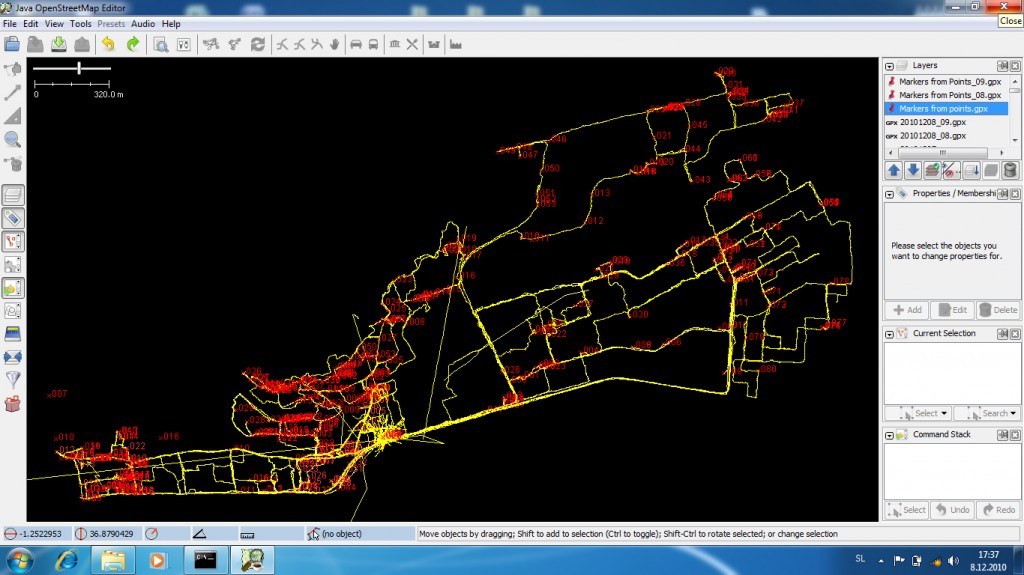
Mathare tracks with points
We also collected couple of hours worth of video footage which we’ll use to make a documentary of the first two weeks in the field.
Lessons learned on the first week:
- Divide people into teams representing different villages. Divide them further into mappers, video and voice members and, if necessary, divide them further into smaller teams of mappers and video.
- There is a need to divide people so that some go to the field in the morning while the others work behind the computer. Map, voice and video editing should take place on different days.
- Find a second venue as one is too small for the amount of people we have at the moment.
This week, 13 Dec – 19 Dec, is round two.
by: primoz December 13th, 2010 comments:
The biggest slums in Nairobi (like Kibera and Mathare) usually consist of different villages. That is why before we started working in Mathare we had to determine where these villages are located.
This was/is important for many reasons:
- Determining the area. By locating the villages of the slum we outlined the area of Mathare.
- Planning purposes. We use these villages to plan how different teams will operate. The idea is that each team maps its own village, bringing me to the next important thing:
- Each village needs to be represented. A person coming from a certain area knows that area best.
- And the last but not least – security. There is no way that a person, specially coming from outside, can freely walk the streets of Mathare.
For the purpose of determining the village boundaries we printed out the satellite imagery of Mathare, which was donated to us by the American Association for the Advancement of Science. After that I gave the satellite imagery to Simon Kokoyo form COOPI and Reality Tested Youth Program. He walked around the slum and talked to elders, who helped him determine the village boundaries of the slum by drawing them on the printed satellite imagery.
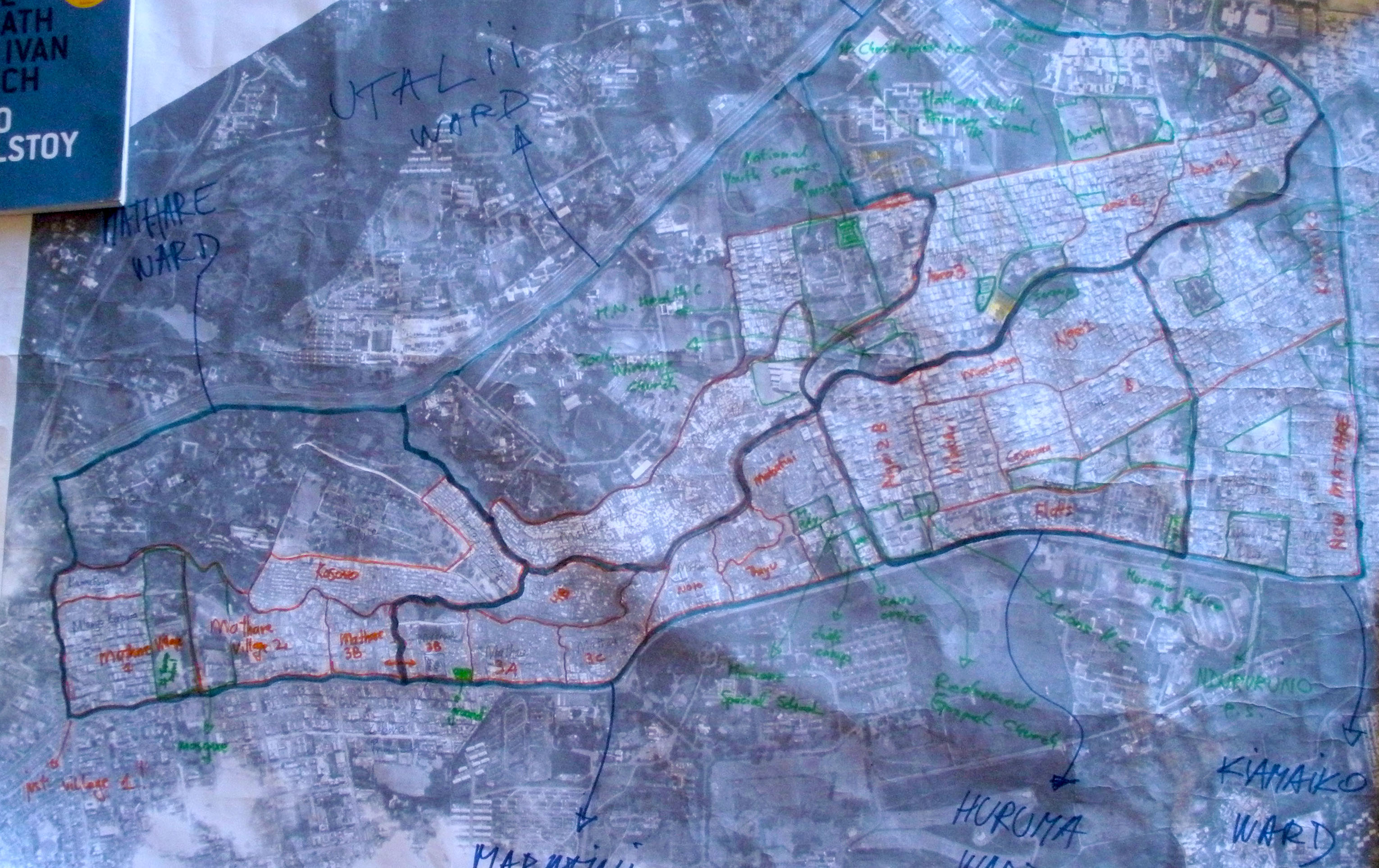
Drawn villages of Mathare
I uploaded the satellite imagery into JOSM and digitized the boundaries according to the drawn image.
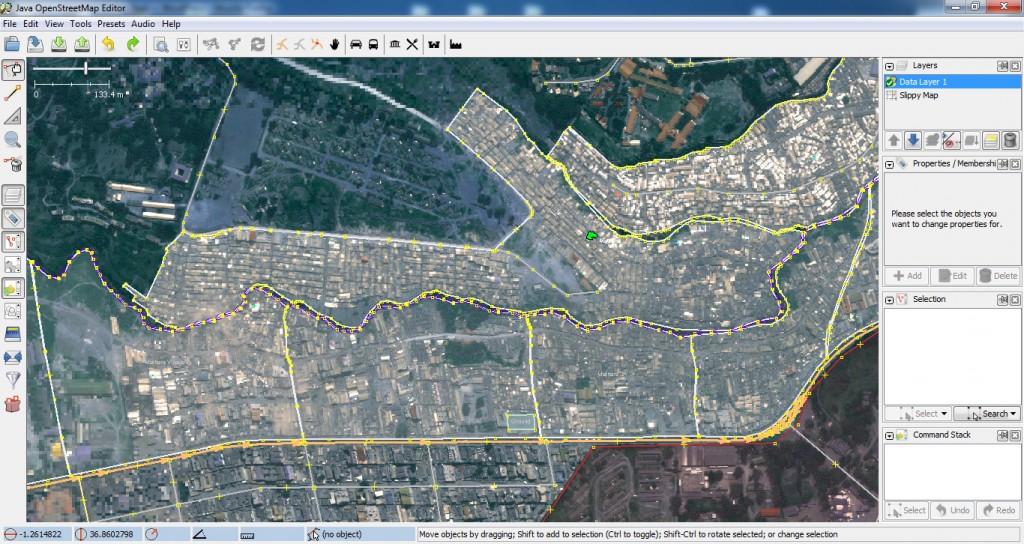
Digitizing in Java OpenStreetMap Editor
And HERE are the villages of Mathare and Mathare slum area in OpenStreetMap – the borders have already changed couple of times :)








